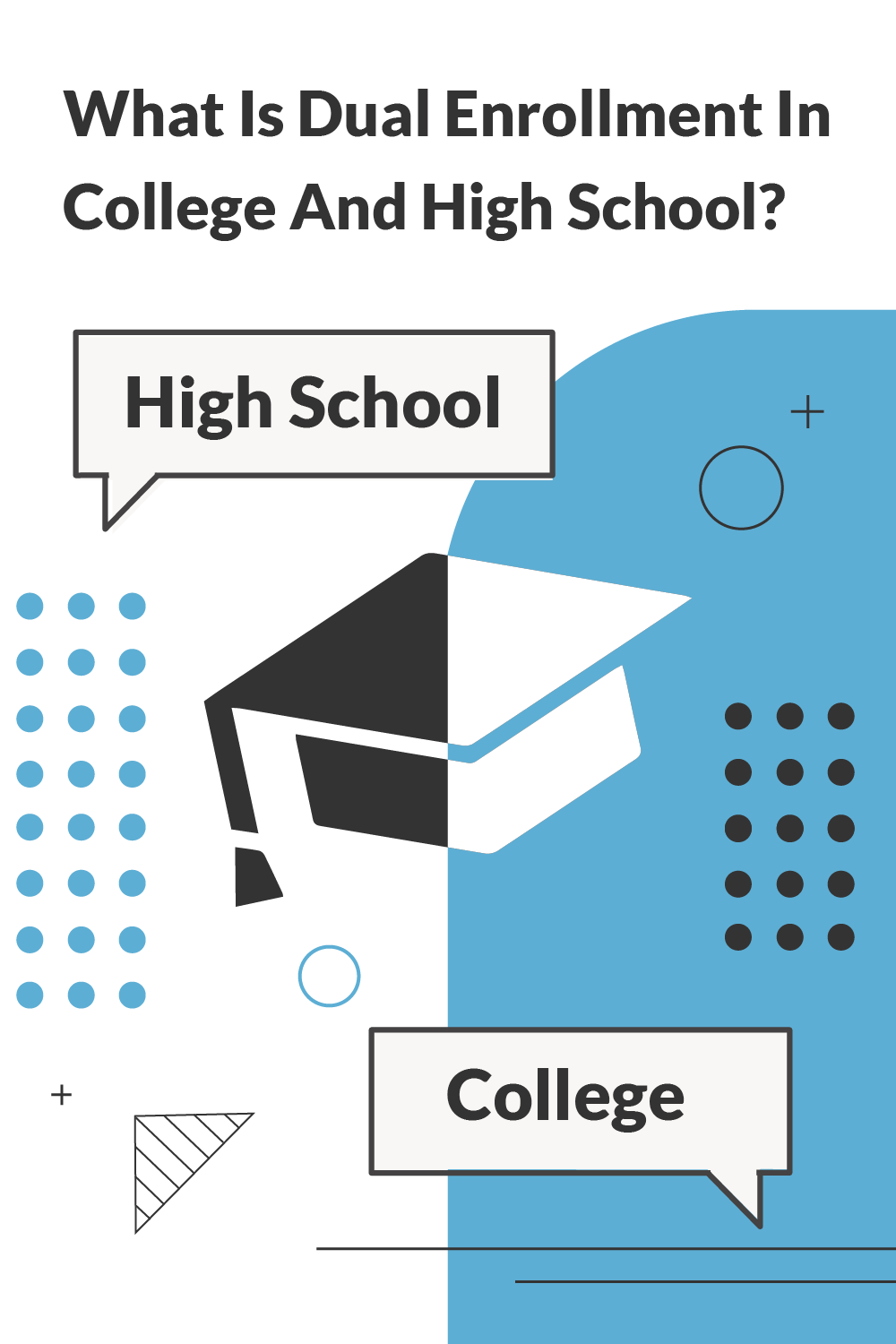
If the thought of taking college-level classes while in high school is appealing, dual enrollment might be for you. It’s a completely optional way to get college credits during your high school years.
The motivation to do it is mostly around cost (or sometimes the need to take more advanced courses than a high school offers). The ability to knock out expensive credits before arriving on campus can both accelerate your graduation timeline and limit your out-of-pocket costs for a degree.
Let’s explore the ins and outs of dual enrollment.
What Is Dual Enrollment?
Dual enrollment, sometimes called dual credit, is a type of class that counts for both high school and college credit. Eligible high school students can take dual enrollment classes. If the student passes the class, the credit counts toward both their high school diploma and college degree.
How Dual Enrollment Works
The appeal of dual enrollment is the ability to fulfill high school requirements and college coursework at the same time. But the exact mechanics of the program vary based on the school.
Typically, students start by applying to a dual enrollment program. The student can pursue a Bachelor’s degree, Associate’s degree, or certificate. If accepted, students can take the available classes that suit their interests and strengths.
Depending on the situation, classes can be taken through high school, online courses, or a local community college. The student must achieve a grade of at least a C to pass the class. Regardless of grades, it becomes a part of your college record.
When it’s time to apply to college, the school may or may not accept dual enrollment credits. In-state public colleges are more likely to accept dual enrollment credit than out-of-state colleges or private universities.
Dual Enrollment vs. AP Classes
Both dual enrollment and AP classes offer the chance to earn college credit as a high school student. However, the two types of classes are very different.
Here’s a breakdown of the differences:
Location
Dual enrollment classes are college courses made available to high school students. While some high schools have dual enrollment options on campus, many students must take these classes on a college campus or online.
In contrast, Advanced Placement (AP) classes are exclusively taught by high school teachers. While AP classes are designed for college-level learning, students won’t have to take these classes online or through a community college.
Course Length
Most dual enrollment courses last for a single semester, which equates to half the school year. In some cases, AP classes only last for a single semester. But AP classes often last for a full school year.
The ability to take classes by the semester opens the door to more coursework opportunities.
Credit
Students who pass a dual enrollment course with a C or better automatically receive college credit. If the college you choose to attend accepts dual enrollment credits, there is no extra testing requirement.
However, students taking an AP course must pass a standardized exam at the end of the year. The college you plan to attend will determine the minimum score to receive credit.
Money Tips For The Above Average High School Graduate
Here’s five money tips for the graduate that wants to be in the top 1%.
Requirements
Dual enrollment requirements vary from state to state. Typically, only junior and senior high school students can pursue dual enrollment credits. But some states allow exceptions for gifted students.
In certain states, like Alabama, Florida, and North Carolina, students must maintain a minimum GPA to stay in dual enrollment programs. For many, the requirement is a 3.0 unweighted GPA.
Additionally, many states require students to obtain a written recommendation from a high school or college staff member. The recommendation should include why the student is ready for dual enrollment courses.
Many dual enrollment programs also require parent permission, a minimum SAT score, completed course prerequisites, and any other requirements set by the administering college.
Cost
The exact costs depend on where you live. In some cases, dual enrollment options are free through community colleges.
According to Pearson, dual enrollment classes may range from free to $400 per class. Additionally, students may need to purchase expensive college textbooks.
The average cost of a traditional college course is $926. With that, dual enrollment is often a more affordable option than traditional college coursework.
Related: Arkansas offers a scholarship for dual enrollment students to make the course free or nearly-free.
Pros And Cons of Dual Enrollment
Every educational choice has advantages and disadvantages. Here’s what to keep in mind about dual enrollment.
Pros
- Cost-effective option: It’s often more affordable to take dual enrollment courses than traditional college classes.
- Lighten your degree requirements: Completing some of your required coursework before you reach college helps you reduce costs and save time.
- Challenging classes: Dual enrollment classes are more intense than high school classes. Push yourself to learn and grow with more rigorous course options.
- Motivation: Research has shown that students who choose dual enrollment programs are more likely to graduate from high school and college.
Cons
- Challenging classes: If you don’t pass the class with at least a C, it won’t count toward high school or college credit.
- Shortened college experience: Many students want the full college experience. Coming to campus with significant credits may shorten your path to a degree.
- Credits don’t always transfer: Not every college will accept your dual enrollment credits. You need to research to determine which colleges will accept the credits.

Sarah Sharkey is a personal finance writer covering banking, insurance, credit cards, mortgages and student loans. She has written for numerous finance publications, including MagnifyMoney, Business Insider and ChooseFI. Her blog, Adventurous Adulting, helps young adults get a handle on their finances.
Editor: Claire Tak Reviewed by: Robert Farrington
